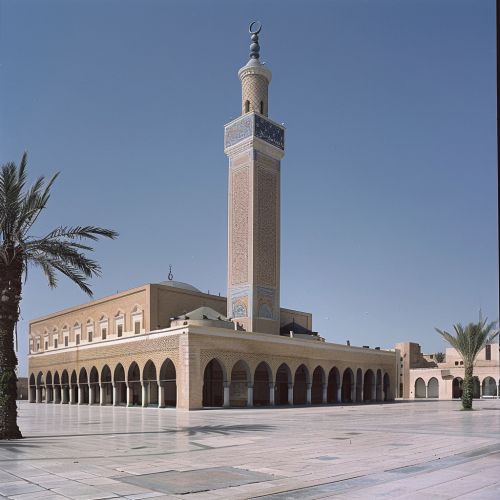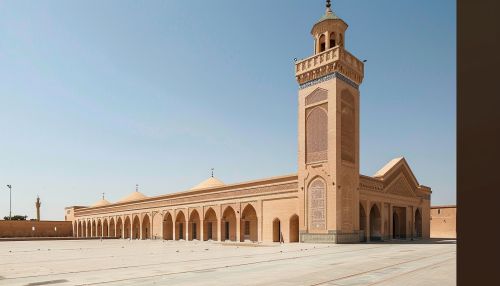Great Mosque of Zitouna
History
The Great Mosque of Zitouna (Arabic: جامع الزيتونة), also known as the Mosque of El-Zitouna, is a significant religious and historical site located in the heart of the medina of Tunis, the capital of Tunisia. The mosque's origins date back to the early Islamic period, with its initial construction attributed to Uqba ibn Nafi, a prominent Arab general and the founder of the city of Kairouan, in 732 AD. Over the centuries, the mosque has undergone numerous renovations and expansions, reflecting the architectural and cultural influences of various ruling dynasties, including the Aghlabids, Fatimids, Zirids, Almohads, Hafsids, and Ottomans.


Architecture
The Great Mosque of Zitouna is renowned for its architectural grandeur and historical significance. The mosque covers an area of approximately 5,000 square meters and features a large rectangular courtyard surrounded by porticoes with horseshoe arches. The prayer hall, located on the southern side of the courtyard, is divided into fifteen naves by rows of columns, many of which are spolia taken from ancient Roman and Byzantine structures.
The mosque's minaret, which stands at 43 meters tall, is one of the most prominent features of the Tunis skyline. It was constructed in the 19th century during the Ottoman period, replacing an earlier minaret built by the Hafsids. The minaret's design is influenced by Andalusian and Ottoman architectural styles, characterized by its square base and octagonal shaft.
Educational Role
The Great Mosque of Zitouna has historically served as a center of learning and scholarship. It is home to the University of Ez-Zitouna, one of the oldest universities in the world, which has played a crucial role in the intellectual and cultural development of the Islamic world. The university was established in the 8th century and has produced numerous renowned scholars, theologians, and jurists.
The curriculum at the University of Ez-Zitouna traditionally focused on Islamic studies, including Quranic exegesis, Hadith, Fiqh, and Arabic grammar. Over time, the university expanded its offerings to include subjects such as mathematics, astronomy, medicine, and philosophy. The mosque's library, which houses a vast collection of manuscripts and rare books, has been a valuable resource for scholars and researchers.
Cultural Significance
The Great Mosque of Zitouna holds immense cultural and religious significance for the people of Tunisia and the broader Islamic world. It is not only a place of worship but also a symbol of the rich historical and cultural heritage of Tunisia. The mosque has been a focal point for various religious, social, and political events throughout its history.
The mosque's architecture and decorative elements, including its intricate tilework, stucco carvings, and wooden ceilings, reflect the artistic and cultural influences of different periods and dynasties. The mosque's courtyard, with its serene ambiance and beautiful arcades, serves as a gathering place for the local community and visitors alike.
Restoration and Preservation
Over the centuries, the Great Mosque of Zitouna has undergone several restoration and preservation efforts to maintain its structural integrity and historical authenticity. These efforts have been carried out by various ruling authorities, including the Aghlabids, Hafsids, and Ottomans, as well as by modern conservationists.
In recent years, the Tunisian government and international organizations have collaborated on projects to restore and preserve the mosque's architectural and artistic heritage. These projects have included the restoration of the mosque's minaret, the conservation of its decorative elements, and the digitization of its manuscript collection.
